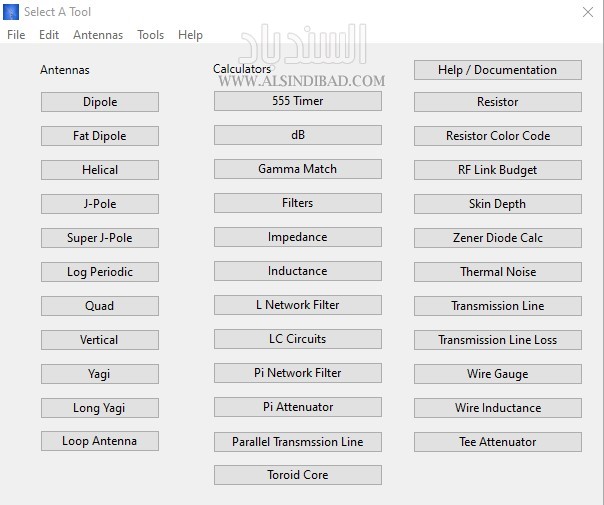
In addition, most methods do not offer solutions to evaluate the performance of neuronal activity inference on user datasets.
#PYTHON RF TOOLBOX MOVIE#
All these points are illustrated in Movie 1, Movie 2 (region CA1 of the hippocampus from mouse pups). Inferring neuronal activity from the developing hippocampus in vivo is even more challenging because of several factors: (1) recurring network synchronizations are a hallmark of developing neuronal networks ( Provine, 1972 Galli and Maffei, 1988 Ben-Ari et al., 1989 O’Donovan, 1989), which results in frequent cell co-activations, (2) the somata of pyramidal neurons are densely packed which results in spatial overlap, (3) different calcium kinetics are observed in the same field of view (because of different cell types and different stages of neuronal maturation Allene et al., 2012). Those contaminations increase the risk of misinterpretation of the data. In a recent study from Gauthier and collaborators ( Gauthier et al., 2018) analyzing calcium imaging data recorded in the region CA1 in adult rodents ( Gauthier and Tank, 2018), 66% of the cells were reported as having at least one false transient, and overall, among 33,090 transients (from 1325 sources), 67% were considered as true, 13% as false, and 20% were unclassified. Moreover, an analysis based on the fluorescence traces even after a demixing process can still be biased by overlapping cells ( Gauthier et al., 2018). However, to optimize the deconvolution parameters, a ground truth based on simultaneous targeted patch-clamp recordings and two-photon imaging is necessary ( Chen et al., 2013 Evans et al., 2019). State-of-the-art computational tools to infer neuronal activity (such as CaImAn Pnevmatikakis et al., 2016 Giovannucci et al., 2019) are based on the deconvolution and demixing of fluorescence traces from segmented cells. A challenge is therefore to offer an analytical tool that would be scalable to the wide variety of calcium imaging datasets while providing reliable analysis.

#PYTHON RF TOOLBOX HOW TO#
One difficulty resides in how to infer single neuron activation dynamics from changes in fluorescence of a calcium indicator. Advances in imaging now allows for the simultaneous recording of several thousands of neurons ( Stringer et al., 2019). In vivo calcium imaging is widely used to study activity in neuronal microcircuits. Overall, DeepCINAC offers a simple, fast and flexible open-source toolbox for processing a wide variety of calcium imaging datasets while providing the tools to evaluate its performance. It also enables automatically identifying activity originating from GABAergic neurons. This method is able to reach human performance and offers a better F1 score (harmonic mean of sensitivity and precision) than CaImAn to infer neural activity in the developing CA1 without any user intervention. Then, we analyzed movies from mouse pups using a convolutional neural network (CNN) with an attention process and a bidirectional long-short term memory (LSTM) network.

#PYTHON RF TOOLBOX MANUAL#
To meet this challenge, we first developed a graphical user interface (GUI) allowing for a precise manual detection of all calcium transients from imaged neurons based on the visualization of the calcium imaging movie.

Indeed, the latest analytical tools often lack proper benchmark measurements. However, state-of-the-art computational tools are not optimized for the reliable detection of fluorescence transients from highly synchronous neurons located in densely packed regions such as the CA1 pyramidal layer of the hippocampus during early postnatal stages of development. Two-photon calcium imaging is now widely used to infer neuronal dynamics from changes in fluorescence of an indicator.


 0 kommentar(er)
0 kommentar(er)
